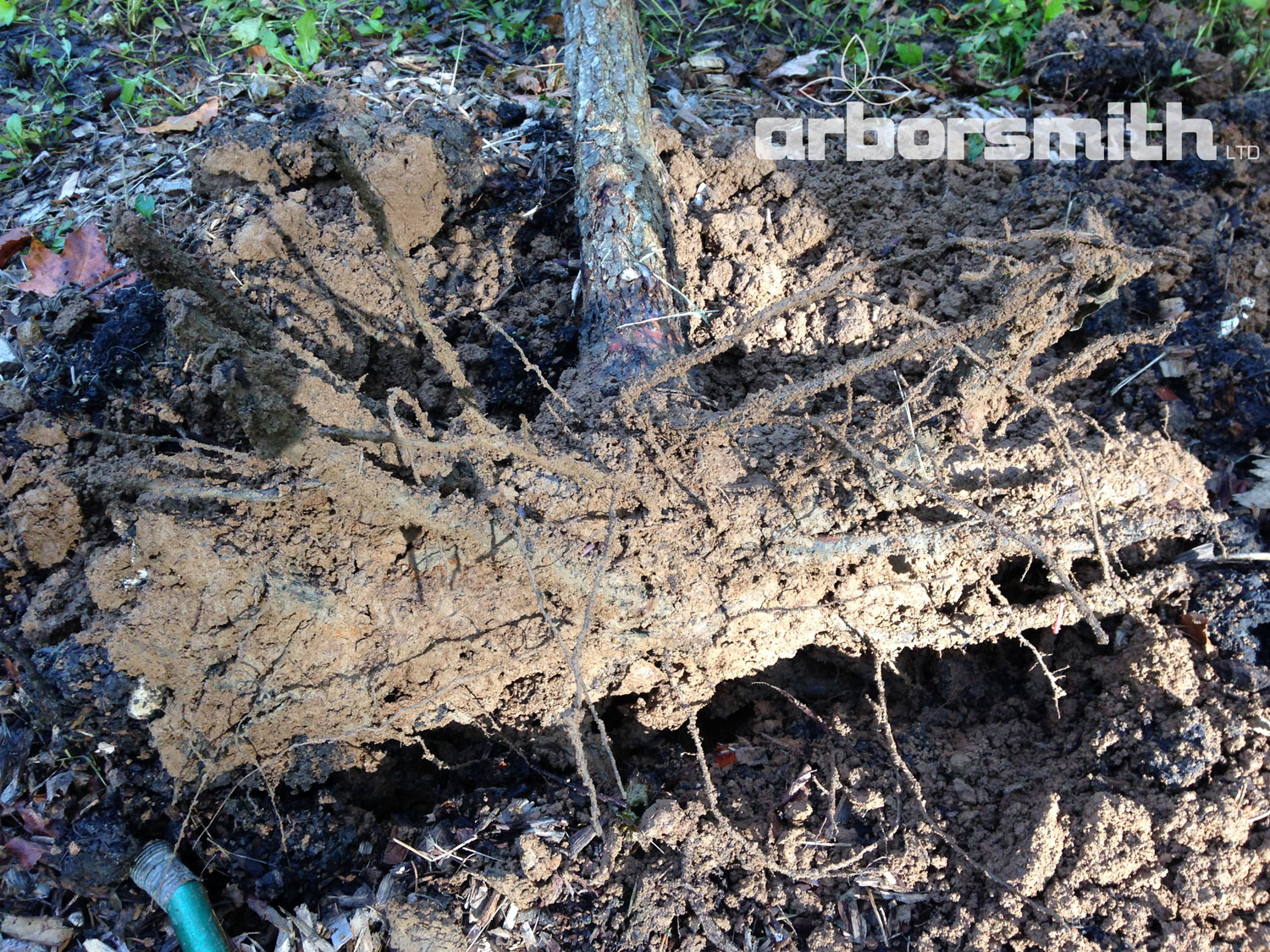Tree Planting Tribulation
/Mother Nature’s Moment June/July 2018
by: Lesley Bruce Smith, ISA Certified Arborist
A newly planted tree in an ideal world
This time of year we find ourselves on a lot of properties that have young trees that are struggling or dead. As arborists we are the ones that get called in to diagnose, treat and in the sad cases do post mortem on trees that were installed less than two or three years ago and have just not survived. The reason we get called instead of the folks who installed the trees is because the infamous “guarantee” has expired along with the tree. Planting trees can be an expensive undertaking and when we care enough to plant a tree we are invested in its long term survival and hope for it to thrive. It is always a sad thing when something we have planted expires. So I hope to spend a little time reviewing some of the critical “precepts for planting prosperity”, especially now when so many new trees are being installed.
This is often what we find when we examine the trunk coming out of the root ball. If it is we need to gently dig into the root ball to expose the root flare. Artwork by Lesley Bruce Smith.
First thing to know about tree planting is that a new tree, which in the majority of cases was dug from a nursery setting and then balled and burlapped, is under a lot of stress, because it has lost 90% of its roots! After they have been dug up they are usually shipped to a retail setting for selling. Often their needs for careful watering and shade requirements are not considered making them all the more susceptible to expiration. But let’s assume we have purchased from a reputable nursery or garden center that has been careful in their handling and transport. We have a tree which we have thoughtfully selected and know that we are placing it in a location where it’s specific growing requirements, like sunshine, soil and space are considered. You are standing with shovel in hand and a new tree at your side and wonder “what do I do next? “
THIS EXCAVATED BURR OAK TREE PLANTED BY A MOST REPUTABLE LANDSCAPE COMPANY, FOR ONE OF OUR MOST KNOWLEDGEABLE CLIENTS WAS PLANTED TOO DEEPLY, LIVED BEYOND THE GUARANTEE PERIOD AND THEN DIED.
- First order of business is to look at the trunk where it is coming out of the dirt ball and look to see if it looks like a broom handle or has a gentle flare at the base. Every tree has a root flare and it should be planted at ground level, NOT below. Sometimes that means we have to start digging gently into the ball to expose that root flare. Although that feels scary it is SO critical for the tree’s long term survival. See diagram.
- Once the root flare is exposed we measure from the root flare to the bottom of the ball and that is the depth of the hole we should dig. The configuration of the hole should be tapered gently at the sides as shown.
- If you did dig into the root ball to find the flare you have removed the twine and burlap from the top of the ball already, if not, then after you place and position the ball in the hole you need to cut away the burlap from the top of the ball and remove all the twine. This single step could eliminate at least 50% of the deaths we see post planting. DO not believe the lie that it will biodegrade and all will be fine…it won’t be fine. Take it off, at least on the top of the ball.
- The next step is to back fill. Don’t worry about adding amendments to the soil, that can create more problems than it solves. Gently tamp the soil back into the hole.
- MULCH, Mulch, mulch. Mulching properly after planting can mean the difference between a tree that thrives and one that sort of just languishes or fails. Mulching should be done carefully to about a 4”-6” depth and at least an 8’ radius, YES, you heard me correctly, 8 feet. That is where those young new roots will thrive. It should be a fine grade of organic mulch that is kept away from the trunk of the tree.
- Watering is the last step of planting and aftercare. You should water heavily for about 1 hour to fully saturate the mulch and top of the root ball using the end of a slow running hose. Then if we do not get rain be sure to water for one hour once a week for the first year. If you are unsure of the need to water, check the moisture in the soil under the mulch. If dry water, if moist, wait.
- All the juicy details of Planting and Mulching can be found in our Arborsmith Abstracts, so if you need pictures, a Spanish translation, or a more detailed description, call the office and request our copyrighted Abstracts for a more careful review of this material.
Hybrid Elms - May/June Tree of the Month
Poison Ivy Primer - May/June Mother Nature’s Moment





